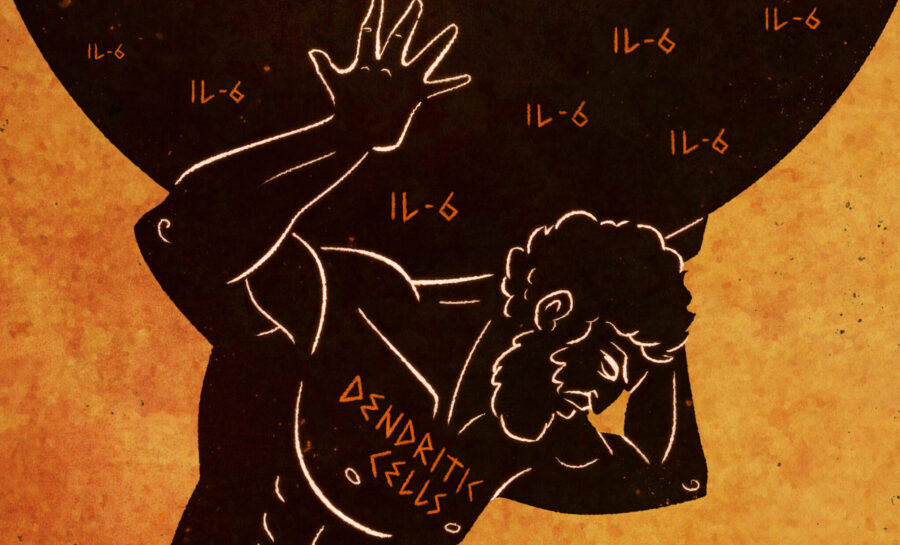image courtesy of the authors
Ragon scientists discover dendritic cells help regulate IL-6, a key component in cytokine storms.
The cytokine IL-6 is a major driver of immune response and, when present in high levels in the blood, can help drive cytokine storms, such as seen in severe COVID-19 disease. Recently, Ragon scientists published a study in the journal Immunity showing that a type of immune cells called dendritic cells can help regulate IL-6 through a buffering system in the blood.
“If we know about the systems that regulate IL-6,” says Ragon Core Member Daniel Lingwood, PhD, “we can then develop treatments that use those systems to combat dangerously high levels of IL-6, which can underscore both chronic diseases and cytokine storms.”
Lingwood’s team studied a molecule called the soluble IL-6 receptor (sIL6R), which circulates throughout the body and binds IL-6. sIL6R, which the team determined was made by a specific lineage of dendritic cells, binds to IL-6 and, under normal circumstances, engages with a protein called sgp130, which prevents uncontrolled IL-6 from signaling in the body. Together, sIL6R and sgp130 work together as a buffering system, catching any unnecessary IL-6 in the blood and preventing it from causing inflammation.
When the mice in the study were infected or had increased inflammation, the team discovered the dendritic cells increased production of sIL6R by using specialized proteins called enzymes to cleave IL6R at the cell surface, which broke its ‘tether’ to the cell and allowed it to circulate through the blood as sIL6R.
When the team modified the dendritic cells so they could no longer perform this function, IL-6 levels became dysregulated and the mice weren’t able to respond as well to respiratory distress. This means that the dendritic cells were responsible for sIL6R production, which is a key component of the IL-6 regulation through this blood-buffer system, explains Lingwood.
“Rescuing inflammatory distress by restoring the blood-buffer system is suggestive of treatment modalities for harmfully high levels of IL-6, such as for COVID-19 patients experiencing fatal cytokine storms,” says Ashraf Yousif, PhD, the first author on the study.
This complex regulation, controlled by a single immune cell lineage, underscores how finely balanced the control of IL-6 must be in order to both enable the necessary pro-inflammatory immune defense IL-6 drives while also guarding against the harmful signaling that occurs when IL-6 levels get too high.


 Ragon Institute
Ragon Institute 